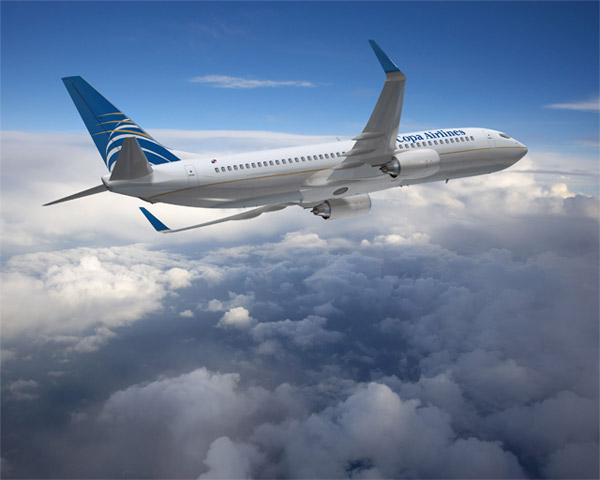Copa Airlines this month celebrated its second year offering direct flights to and from Tampa Bay and Panama City, Panama — a central hub that offers access to dozens of Central American and South American countries.
But unlike the other international flights out of Tampa International Airport operated by British Airways, Edelweiss and newcomer Lufthansa, Copa’s flight has had mixed results so far. And Tampa Bay continues to fall behind the state’s other large metro areas, Miami and Orlando, when it comes to international travel.
Copa Airlines, which is a subsidiary of Copa Holdings, S.A., posted an average load factor, or the percentage of filled seats on airplanes, of 67 percent for its first full year in Tampa in 2014, according to data from the U.S. Department of Transportation. In Orlando, Copa’s load factor average was 92.3 percent last year. In Miami it was 87.9 percent.
“I’m sure they’re losing money. Airlines have to be pretty close to 85 percent load factors just to break even anymore,” said Ken Qualls, CEO of Flight Management Solutions in Boca Raton, an aviation consulting firm. “That said, it’s not uncommon for airlines in a major arena to expect load factors to taper off after the two-year or three-year mark.”
Weak economies in South American countries like Brazil also could be a factor.
It’s difficult to rely on just one indicator, such as load factor, to determine how successful an airline is, said Chris Minner, vice president of marketing at Tampa International Airport.
“There are several factors that determine the success and profitability of a flight service. You can have 100 seats in a plane and have a 100 percent load factor, but sell tickets for just $1 and lose all kinds of money,” he said.
Copa Airlines carries an average of 57 passengers per way each day from Panama City and Tampa, Minner said. In addition, there are an average of 284 passengers who pass through Tampa’s airport on a daily basis on their way to or from Latin American countries via connecting flights, Minner said.
That’s up from the 255 passengers per day who were going to Latin America through Tampa in 2011, before the launch of Copa Airlines in 2013. Minner said traffic to Latin America is up 29 percent thanks to Copa.
According to load factors, Tampa’s service to London on British Airways isn’t always as full as the same flights leaving out of Orlando or Miami either. In Tampa, British Airways had a 78.3 percent average load factor last year. The same flight in Orlando was 84.5 percent and Miami’s was 86.9 percent.
Tampa’s flight to Zurich on Edelweiss Air isn’t offered anywhere else in the state but had an average load factor of 74.1 percent last year. Lufthansa’s service to Frankfurt is too new to track, but its first month load factor was 86 percent in October.
Tourism boosters say that Copa’s nonstop Tampa-to-Panama flights, which run four times a week, open up access to destinations throughout Central and South America and the Caribbean. From Copa’s hub at the Tocumen International Airport in Panama, travelers can connect to more than 55 destinations in Latin America.
“Copa’s business model focuses on increasing connectivity between underserved markets and our flight was the first-ever nonstop airline service between Tampa Bay and Latin America,” said Fernando Fondevila, regional commercial regional manager of North America for Copa Airlines. “We saw a business opportunity in Tampa because of its existing commercial ties to Panama, the large number of corporate headquarters in the Tampa Bay area and the fact that the Tampa Bay port is the largest in Florida and did millions of dollars of business with Panama.”
And now that the flight is here, the work can begin to start beefing it up.
The number of visitors coming to Tampa Bay from Latin American countries is growing slowly, according to local tourism bureaus. In Pinellas County, it grew by 25 percent this year, said David Downing, executive director of Visit St. Pete-Clearwater, the county’s tourism arm, who noted it’s still a relatively small portion of the people who come here.
“Because of the existence of Copa Airlines, we’re on the radar of travel agents and tour operators who haven’t considered us before,” Downing said. “The feedback we’re getting is that now that travelers can get here, they’re willing to opt out of going to Miami and try something different and new on the west coast of Florida.”
The number of visitors from Latin American countries is up 3.7 percent in Hillsborough County for the year as of October, said Santiago Corrada, president and CEO of Visit Tampa Bay, Hillsborough County’s tourism marketing agency.
“There are a number of Latin Americans who live in the region, which makes travel on Copa so important and convenient,” Corrada said.
But without more marketing, it’s hard for Tampa Bay to stand out as a destination when Orlando has Disney World and Miami has long been a top U.S. destination for Latin American travelers.
“I doubt Copa would ever leave” the market, Qualls said. “But they’ve got competition from carriers like Delta in bigger hubs like Atlanta. It’s really time to step up the marketing.”
